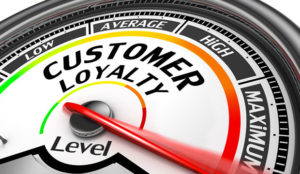Customer data platforms (CDPs) are a hot topic among marketers. Here’s some quick anecdotal evidence: We polled a recent webinar audience about the topic, and while only around 10 percent of the group had a CDP in place today, roughly 70 percent said they were evaluating vendors or considering building their own platform.
This level of interest in CDPs isn’t a major surprise. Marketers are urgently looking to unify their customer data and eliminate silos, latency, and other issues that can hurt customer experience across digital and physical channels. But it begs another question: Should you build or buy a CDP?
The build-versus-buy decision is an important one. Companies have been making similar choices about their technology stacks for decades. When it comes to CDPs, however, some organizations are rushing into this decision. In fact, a particular business need might not even require a CDP in some cases.
We find there’s a lot of confusion out there about what a CDP is and what it can do for you. That’s also unsurprising since there are probably around 150 different vendors who say their solutions have CDP capabilities. That means there’s a lot of variability in those offerings, which can make the build-versus-buy evaluation seem overwhelming.
There are some other important questions to ask before you make a build-or-buy choice:
- What are your goals or use cases for a CDP?
- Where are your customers engaging with you today, and in which of those areas are you falling short in terms of customer experience?
- Last but certainly not least: Where does your data live?
When speed is truly of the essence, or you have some very specific need that is best met by a particular tool, then “buy” might be the right choice. But if you can’t answer those questions, you should pump the brakes a bit. Otherwise, you might be speeding toward a big purchase that won’t necessarily solve your problems.
Let’s take a closer look at these factors.
What Are My Use Cases?
If you can’t define why you need a CDP, then you shouldn’t buy one — and you’re probably not equipped to build one, either.
As with most marketing technologies, CDP success requires clear business goals. A business that is buying a CDP without clear use cases may be buying a solution to a problem that might not even exist.
Where Are My Customers Engaging With Me?
This question is important for two key reasons.
First, if you don’t know the answer, then a CDP probably won’t help you just yet. But it’s also important to know your strong suits because you don’t want to fix something that isn’t broken.
It could be that you’re doing a great job in your mobile channels but that your social engagement is off-target. You don’t want to negatively impact that mobile engagement while trying to fix a less successful area.
Where Does My Data Live?
This might be the most important question of all. Neither building nor buying a CDP usually makes much sense for one subset of your data. Your marketing technologies need to work very tightly with all of your data — a CDP is no exception.
In fact, there’s a symbiotic relationship between your data and your use cases. Some organizations make the mistake of saying, “We’ve got this data set; now let’s develop a use case from it.” Actually, you want to be able to say, “These are our use cases; now let’s execute them based on our data.” Moreover, that data is accurate, accessible, and current.
This is why a robust customer data infrastructure is so crucial. Companies that are already investing in that infrastructure are usually best positioned to have success with a CDP. They know where their data lives because it usually resides in the same place: a unified cloud data warehouse.
These organizations typically have the technical sophistication and resources that are best used by building a CDP for their unique requirements as a complementary layer on top of a robust customer data infrastructure.
The build route gives them more control, potentially lower costs, and the ability to bake the necessary integrations in from the start, among other benefits.
You’ve probably heard the expression, “If you want something done right, do it yourself.” It applies to companies that have the right combination of customer data infrastructure and use cases in place. They are often better served by building rather than buying a CDP.
Conclusion
There are certainly tradeoffs to consider. If time to market is the top priority, then “buy” becomes more appealing. If your technical team is constrained by a more pressing goal, then that’s another factor to consider.
If you have clearly defined goals and a centralized infrastructure such as a cloud data warehouse already in place, then lean toward building your own CDP. It’s more likely to lead to “done right” outcomes that maximize the investments you’ve already made.
















































